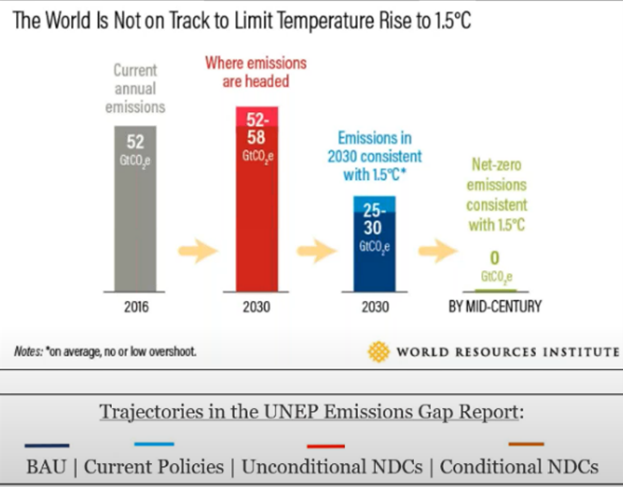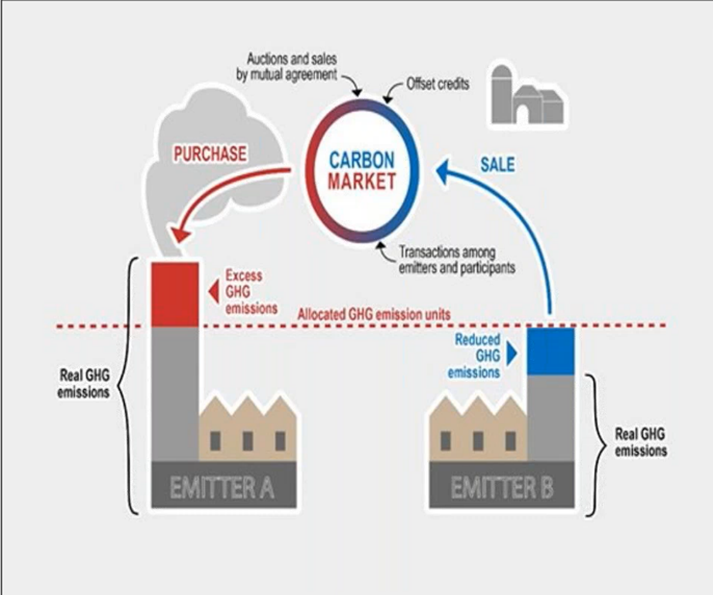
When the greenhouse gases were increasingly threatening life on earth, a protocol was adopted in 1997 in Kyoto, Japan to mandate that the industrialized nations cut their greenhouse gas emissions. The protocol was linked to the United Nations Framework Convention on Climate Change (UNFCCC) which seeks to reduce the concentration of GHG emissions in the atmosphere in a cost-effective way.
This compelled the nations to go green across all the sectors. But this target is paradoxical to achieve – how will the polluting industries reduce their emissions? This is where innovative financing solutions could play a prodigious role. Worldwide, the creation of carbon markets has provided an additional source of income for clean energy projects. One of the highly valuable avenues for generating capital for climate projects has been the Clean Development Mechanism (CDM). Countries that ratified the Kyoto Protocol were subjected to maximum carbon emission levels for specific periods and participated in carbon credit trading.
India is on a trajectory to decarbonize its industries and fulfil its nationally determined contributions commitment. AGNIi Mission, under the O/o of the Principal Scientific Adviser to the Government of India seeks problem statements and strategic focus areas from the corporates and business houses of the nation. Most of the energy companies have shown interest in reducing carbon emissions. However, many of these companies are asset-heavy and have incredibly long investment cycle. Hence, these firms are not able to decarbonize themselves at the required expected levels.

While the market in India for decarbonization (including energy efficiency and wide access) appears to be large, it has only limited dedicated options. Traditional forms of sustainable finance do not cover these. For example, one of the AGNIi partners (a global pharmaceutical company) cannot issue green bonds to finance its ‘critical’ plants or decommission its old captive plant despite the fact that both of these results into GHG emission reduction.
Corner offices of these organizations have found unique solutions to this challenge. Companies have decided to invest into technologies that lead them towards carbon neutrality – either EPC contracts or equity investment. This allows polluting industries to attract capital so as to transform them into low-GHG-intensive businesses, however, not necessarily become entirely green. It does enable firms that would originally not qualify to issue green bonds to obtain sustainability-related financing. It also helps these companies raise long-term capital to become less carbon-intensive in the longer run. These investments are more flexible as compared to traditional green finance.
To work at the grassroots and create a deeper impact, the team at the AGNIi Mission engages with the organizations working towards the bottom of the pyramid i.e. rural India. They believe that there is significant potential for such projects in Indian hinterlands. It is believed that carbon finance can be used to subsidize the cost of green products, improve the products’ value proposition by providing additional revenue streams to make them financially viable and available at a lower price point for end-users. Consequently, it can create economic opportunity for the rural projects. Hence, central and state government promote such projects by launching schemes like UJALA, LED street lighting national program, Atal Jyoti Yojna and so on. In the UJALA programme, wherein 36 crore LED bulbs with 3 years warranty at Rs. 70 have been distributed till date, the rural household penetration has been about 20%. It was observed penetration in rural areas is inversely proportional to the cost of the bulbs as it makes it attractive for the traditionally price-conscious rural audience. Leveraging carbon finance can provide the bulbs at just Rs 15 to the rural households. This showcases the effectiveness of carbon finance in rural markets.
Few of the partner organizations have shown interest in investing into technologies catering to these and offset carbon credits generated because of their core business. Private companies are doubly incentivized to reduce the emissions. First, they will be fined if they exceed the cap. Second, they can make money by saving and reselling some of their emissions allowances.
Some of the carbon projects in India -
Jindal Vijaynagar Steel
The Jindal Vijaynagar Steel has recently declared that by the next 10 years it will be ready to sell $225 million worth of saved carbon. This was made possible because - their steel plant uses the Corex furnace technology which prevents 15 million tonnes of carbon from being discharged into the atmosphere.
Powerguda in Andhra Pradesh
The village in Andhra Pradesh was selling 147 tonnes equivalent of saved carbon dioxide credits. The company has claimed having saved 147 MT of CO2. This was done by extracting bio-diesel from 4500 Pongamia trees in their village.
Handia Forest in Madhya Pradesh
In Madhya Pradesh, it is estimated that 95 very poor rural villages would jointly earn at least US$300,000 every year from carbon payments by restoring 10,000 hectares of degraded community forests.

This also comes with a caveat - although carbon offsets are often presented as instruments to reduce emissions, they do not actually reduce emissions. They generally transfer reductions to where it is cheapest to make them, which normally means a shift from developed to developing/ underdeveloped countries. Greenhouse gas emissions continue to be made at one location on the assumption that an equivalent amount of savings will happen elsewhere. Also, tapping into the carbon markets requires a long and costly process of documentation, monitoring, and verification. With high transaction and time costs, the potential for failure has prohibited most small-scale projects from accessing this complex market. Due to these constraints, carbon finance is generally better suited for large-scale projects such as wind farms, geothermal facilities, and waste-to-energy plants that generate a large number of offsets and are easier to monitor.
To their rescue, AGNIi Mission is on war footing to introduce sustainable technologies from the innovator ecosystem to the companies seeking emission reduction and aiming to ace the carbon race. To conclude, a clear and coherent roadmap, along with synergies between the government, private sector and financial institutions will pave the way for a clean, green and energy secure future.
This blog has been co-authored by Monil Khatri and Gunjan Bengani.


